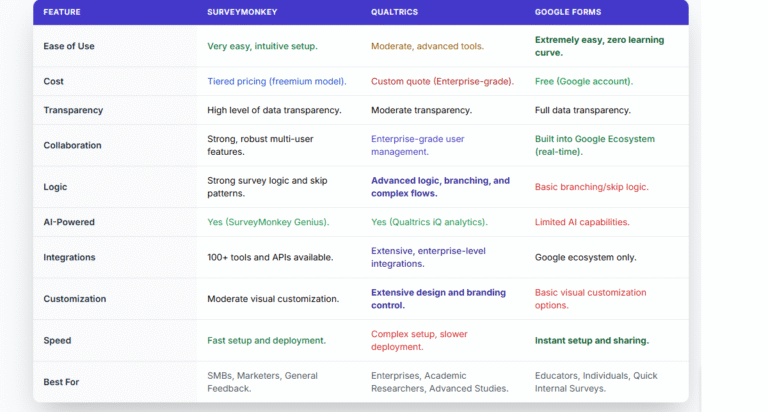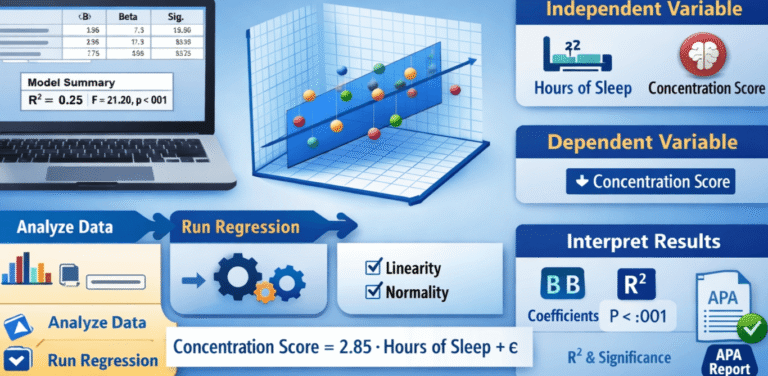Sampling is at the heart of every research survey. Whether you’re conducting a public opinion poll, market research, or academic study, the way you select participants can make or break the credibility of your findings. Understanding survey sampling methods is not just a technical necessity—it’s the foundation for gathering accurate, representative, and actionable data.
In this comprehensive guide, we explore the different types of sampling techniques, when to use each, their advantages and limitations, and how to ensure your sample aligns with your research goals.
For professional assistance, explore our Survey Design Services or Hire a Survey Expert.
What Is Survey Sampling?
Survey sampling is the process of selecting a subset of individuals from a larger population to participate in a study. Instead of surveying everyone, researchers gather data from a representative group and use statistical analysis to draw conclusions about the entire population.
A well-chosen sample allows you to:
-
Reduce costs and time associated with data collection
-
Improve data quality by focusing on relevant respondents
-
Generalize results to the wider population with known levels of confidence
But not all sampling methods are created equal. The right technique depends on your objectives, resources, population structure, and required level of accuracy.
Major Categories of Sampling Methods
Sampling methods fall into two main categories:
-
Probability Sampling – every member of the population has a known and equal chance of being selected.
-
Non-Probability Sampling – not all individuals have a known or equal chance of being included.
Let’s explore each category in detail.
Probability Sampling Methods
These methods are preferred in academic, scientific, and policy research because they enable statistical generalization.
1. Simple Random Sampling
In simple random sampling, each individual in the population has an equal probability of being selected. This is often done using random number generators or lottery methods.
Use Case: Ideal for homogeneous populations or when you have a complete sampling frame.
Advantages:
-
Minimizes selection bias
-
Easy to analyze statistically
Limitations:
-
Requires a full list of the population
-
Can be inefficient for large, scattered populations
2. Systematic Sampling
Here, you select every k-th individual from a list after a random starting point. For example, picking every 10th person in a list of 1,000 respondents.
Use Case: Useful when working with an ordered list of people or items.
Advantages:
-
Easier than simple random sampling
-
Spreads sample across the population evenly
Limitations:
-
Risk of periodicity bias if there’s a hidden pattern in the list
3. Stratified Sampling
The population is divided into subgroups (strata) based on a characteristic (e.g., age, gender), and random samples are drawn from each stratum.
Use Case: Suitable when subgroup analysis is important.
Advantages:
-
Ensures representation of key subgroups
-
Increases precision of results
Limitations:
-
Requires knowledge of strata in advance
-
Complex to organize and implement
4. Cluster Sampling
The population is divided into clusters (often geographically), and a random sample of clusters is selected. Then, either all or some individuals within the chosen clusters are surveyed.
Use Case: When a complete list of individuals is unavailable, but a list of clusters exists.
Advantages:
-
Cost-effective for large populations
-
Good for geographically dispersed subjects
Limitations:
-
Higher sampling error than stratified sampling
-
Clusters may not be homogeneous
5. Multi-Stage Sampling
A combination of sampling methods, often involving cluster sampling at the first stage and random or stratified sampling at subsequent stages.
Use Case: National surveys or studies involving multiple layers (regions, schools, households).
Advantages:
-
Flexible and scalable
-
Reduces logistical effort
Limitations:
-
Complex to design and analyze
-
Potential for compounding errors
Non-Probability Sampling Methods
These are commonly used in exploratory research, pilot studies, and when access to the full population is limited.
1. Convenience Sampling
Participants are selected based on their availability and willingness.
Use Case: Pilot testing, user research, or early-stage studies.
Advantages:
-
Quick and cost-effective
-
Easy to implement
Limitations:
-
High risk of bias
-
Results may not be generalizable
2. Purposive Sampling
Respondents are selected based on specific characteristics or purpose relevant to the study.
Use Case: Studies requiring expert opinions or niche populations.
Advantages:
-
Useful when focusing on specific cases
-
Good for qualitative research
Limitations:
-
Subjective selection criteria
-
Lacks statistical representativeness
3. Snowball Sampling
Initial participants recruit additional respondents, creating a “chain” of participants.
Use Case: Hidden or hard-to-reach populations (e.g., drug users, refugees).
Advantages:
-
Effective for accessing closed communities
Limitations:
-
High risk of sampling bias
-
Dependence on initial contacts
4. Quota Sampling
The researcher ensures the sample reflects certain characteristics in proportion to the population but does not use random selection.
Use Case: Market research, political polling.
Advantages:
-
Controls for key variables
Limitations:
-
Introduces selection bias
-
Not suitable for statistical inference
Choosing the Right Sampling Method
Choosing the best sampling method depends on your research goals, resources, population characteristics, and the level of accuracy required.
Consider:
-
Population size and accessibility
-
Study budget and time constraints
-
Required confidence level and margin of error
-
Need for subgroup analysis
When in doubt, consult with an expert. Learn more about our Professional Survey Design Services for customized guidance.
Sampling Bias and How to Avoid It
Sampling bias occurs when some members of the population are less likely to be included than others, leading to skewed results.
Strategies to minimize bias:
-
Use probability sampling where possible
-
Ensure randomization is truly random
-
Pilot test your sampling strategy
-
Monitor response rates and adjust accordingly
-
Be transparent about sampling limitations in your report
Sample Size Considerations
A small sample can yield inaccurate results, while an unnecessarily large one wastes resources. Sample size depends on:
-
Population size
-
Margin of error (typically ±5%)
-
Confidence level (usually 95%)
-
Expected response rate
Use online sample size calculators or consult our team to find the right balance.
How to Target the Right Respondents
Even with a solid sampling method, your survey won’t succeed if the wrong people participate. Here’s how to ensure you reach your target audience:
-
Use screening questions to filter out non-eligible respondents
-
Share your survey in relevant forums and communities (e.g., industry-specific Facebook or LinkedIn groups)
-
Leverage panel providers when you need access to niche audiences
-
Monitor IP addresses and device usage to prevent duplicate responses
For more distribution strategies, read our guide on Survey Distribution Methods.
Tips to Increase Survey Response Rate
A low response rate can compromise the accuracy of your analysis. Here’s how to encourage more participation:
-
Keep surveys short and relevant
-
Optimize for mobile devices
-
Personalize your invitation messages
-
Provide clear instructions and purpose
-
Offer small incentives (gift cards, prize draws)
Need help improving response quality? Our Survey Distribution Services can help you optimize your outreach.
How Sampling Affects Your Results
Sampling errors and biases impact the validity and reliability of your conclusions. Always interpret your findings with the sampling method in mind.
-
Probability samples enable generalization to the wider population
-
Non-probability samples may provide insights but with limitations on external validity
Mentioning these constraints in your reporting builds credibility and helps readers interpret results appropriately.
Sampling with Purpose
Effective survey research starts with smart sampling. It’s not just a numbers game—it’s about choosing the right people, using the right methods, and applying the right level of rigor.
With this guide, you now have a deep understanding of how to select the most appropriate sampling method for your research needs.
Still need help crafting the perfect sampling plan? Hire a Survey Design Expert from My Survey Help and ensure your next survey gets the data you need—accurately, efficiently, and ethically.






